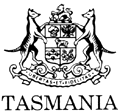Local Government (Management Indicators) Order 2014
I make the following order under section 84(2A) of the Local Government Act 1993 .
10 February 2014BRYAN GREEN
Minister for Local Government
This order may be cited as the Local Government (Management Indicators) Order 2014 .
This order takes effect on the day on which its making is notified in the Gazette.
(1) In this order –Act means the Local Government Act 1993 ;asset consumption ratio, in relation to an asset class required to be included in the long-term strategic asset management plan of a council, means an amount that is the depreciated replacement cost of an asset divided by the current replacement cost of the asset;asset renewal funding ratio means an amount that is the current value of projected capital funding outlays for an asset identified in the long-term financial plan of a council divided by the value of projected capital expenditure funding for an asset identified in the long-term strategic asset management plan of a council;asset sustainability ratio means an amount that is the amount of capital expenditure by a council in a financial year on the replacement and renewal of existing council plant, equipment and infrastructure assets divided by the annual depreciation expense of the plant, equipment and assets for the financial year;net financial liabilities means an amount that is the amount of the liquid assets of a council for a financial year less the total liabilities of the council for the financial year;net financial liabilities ratio means an amount that is the amount of net financial liabilities of a council for a financial year divided by an amount that is the recurrent income (not including income received specifically for new or upgraded assets, physical resources received free of charge or other income of a capital nature) of a council for the financial year;underlying surplus or deficit means an amount that is the recurrent income (not including income received specifically for new or upgraded assets, physical resources received free of charge or other income of a capital nature) of a council for a financial year less the recurrent expenses of the council for the financial year;underlying surplus ratio means an amount that is the underlying surplus or deficit of a council for a financial year divided by the recurrent income (not including income received specifically for new or upgraded assets, physical resources received free of charge or other income of a capital nature) of a council for the financial year.(2) The Acts Interpretation Act 1931 applies to the interpretation of this order as if it were by-laws.
4. Financial management indicators
For the purposes of section 84(2A) of the Act, the following indicators are specified as the financial management indicators to be included in the financial statements of councils:(a) net financial liabilities;(b) net financial liabilities ratio;(c) underlying surplus or deficit;(d) underlying surplus ratio.
5. Asset management indicators
For the purposes of section 84(2A) of the Act, the following indicators are specified as the asset management indicators to be included in the financial statements of councils:(a) asset consumption ratio;(b) asset renewal funding ratio;(c) asset sustainability ratio.
Displayed and numbered in accordance with the Rules Publication Act 1953.
Notified in the Gazette on 19 February 2014
This order is administered in the Department of Premier and Cabinet.

